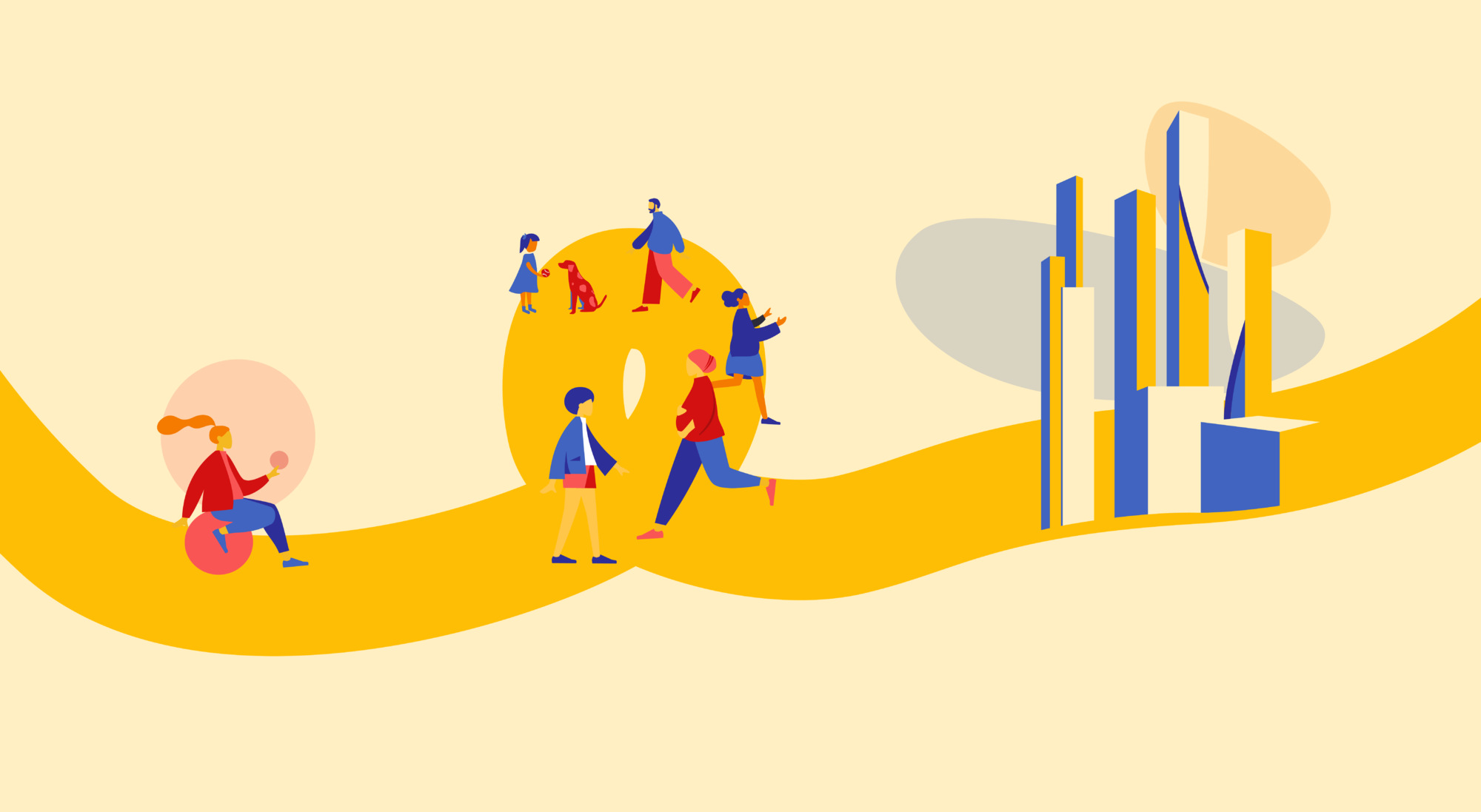Through experience design, we can create new solutions to some of the most-pressing urban issues. How? By linking business and social values with the everyday experiences of users.
Today, design and architecture practices face the complex and multi-layered challenges of rapid digitalisation and globalisation as well as social, environmental and economic shifts. These challenges concern cites, the infrastructure within them, the management systems, the services we use, but perhaps most of all, people’s everyday experiences.
However, the tools used by architects and urban planners struggle in capturing all of the layers of our complex urban systems.
As architecture moved from diagrammatic practice to data-based information models, it primarily focused on visualising tangible assets around the built environment, struggling to communicate both the digital touchpoints and intangible values such as wellbeing, health, sense of belonging, safety, or trust.
At UNSx, UNStudio’s in-house experience design lab, we use a different set of strategic tools to design for resilient cities through the perspective of its users. We also look at all of the layers that form the ecosystems of our cities - the communities, the businesses, the ecologies - and how they coexist.
To understand how these layers relate to the urban environment – and each other - we consider the human experiences that influence the architectural design of our cities. Part of this is pinpointing the individual, societal and business values that form the basis of our urban systems.
Mapping Everyday Experiences
Positive human-centric experiences emerge when good design meets its context. Experience design is a discipline where by focusing on the context we can create meaningful moments, rather than stand-alone solutions.
At UNSx, we start our work process by looking at the social dimension, to find meaningful ways for design to perform within society. To do this, we talk to people, visit locations, watch streets and immerse ourselves into lives, routes and rituals. We then utilise user journeys to map digital and physical points of interactions, behaviours and feelings. This allows us to gain an understanding of the complexities behind people’s choices and identify areas that require a change to create a better living experience.
As an example, hearing from people how they experience a visit to the supermarket can teach us a lot about challenges and opportunities in an urban environment. If people say they do their shopping early on a Sunday morning to avoid traffic jams, although they would rather sleep in, it can say a lot about traffic density issues or distances between neighbourhoods in terms of key urban programming. Meanwhile, a busy outdoor restaurant can signal a lack of shared, outdoor space and the amount of exercise people are doing in their weekly routines can tell you about the quality of walking routes available in their area. By zooming in on small rituals, it helps us pinpoint what key elements should be part of our future cities.
Human-centric Experience with Impact on Urban Ecosystems
At UNSx, we apply systems thinking to shift the design mindset from linear to circular. This means that we look at urban issues as an ecosystem of interconnected factors.
We connect the everyday interactions with the bigger picture to understand how behavioural patterns relate to local environment and businesses. And from this, we devise solutions that meet the needs and aspirations of the community we are designing for. Some of the key questions we look at are:
- What are the painpoints? (The concerns, needs, and everyday struggles when it comes to energy, waste or water.)
- How are local businesses influencing lifestyles?
- How can we connect user needs to new ventures?
From there, we look at impact goals; what shift do we want to create, how does the surrounding ecosystem and the forces that enable change?
Future Cities of Shared Values
It is clear that contemporary challenges require new methods and models of thinking. At UNStudio, we work on expanding the capacities of the architecture industry by taking a holistic approach beyond buildings. To ensure this results in inclusive solutions, we bring a variety of stakeholders on board from the very beginning.
We believe that in contemporary design practice designers cannot solve it all, so we co-create solutions through design workshops with our clients, the end users, and multidisciplinary teams of architects, service designers and strategists.
By looking at a city through the eyes of a diverse group of stakeholders, including those who live and work in these urban environments, and making links between different elements within the system: from the users to the global ecosystem, we fully integrate our social, economic and environmental networks into a holistic experience.
In all of our projects, we put the user at the centre of the solution to create a positive impact for all city stakeholders; citizens, businesses and ecologies. By doing so, we can create future cities based on shared values.

